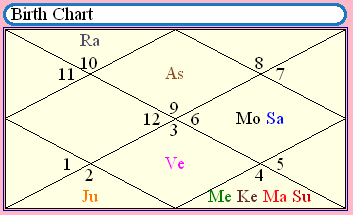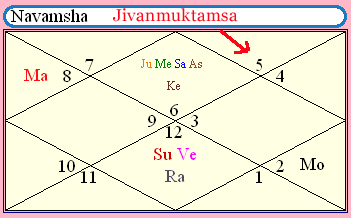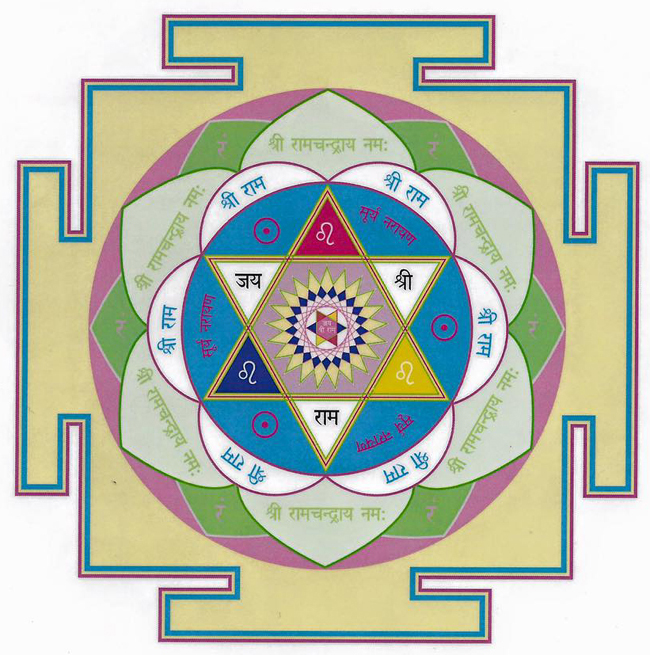| Dear
Sample |
|
|
|
 |
|
Thank you
very much for trusting in my astrological services and
giving me the opportunity to analyze your birth chart
for determination of your Ishta Devta/ Personal
Deity
I have prepared this report for you on
the basis of your Vedic birth-chart calculated for the following
birth-data: |
|
|
Date of birth : |
13 August 1953 |
|
Time of birth
: |
18:00 hrs (Zonal Standard Time in 24 hrs. format)
|
|
Place of birth : |
|
Drummondville [Quebec], Canada |
(045N52; 072W28) |
|
|
| ZST:
05:00 hrs behind GMT |
Applicable Day Light Saving Time (DST):
1.00 hr |
|
|
|
|
 |
As per the above birth-data, your Vedic
(sidereal) ascendant is
Sagittarius
('Dhanu'), the Vedic Moon sign ('Rashi') is
Virgo ('Kanya')
and Janma-nakshatra (birth-star) is
Hasta
(pada-2). Please be reminded that do not
confuse it with your tropical (Western)
ascendant and tropical Moon-sign, which may be
same or a sign higher (in your case, tropical
ascendant is 'Capricorn'). |
|
|
Ishta
Devta literally means ‘Deity to be worshiped’. Ishta
Devta is responsible for opening the passage of
renunciation for the native. Soul is immortal, and it
travels this mortal world many times, in different
physical bodies, to get rid of karmic cycles and attain
Moksha.
Ishta Devta helps us attaining Moksha and coming out of
endless cycle of life and death. Worship of Ishta Devta
not only ensures that whole life of a person is well
guided, protected and taken care of, but also makes it
certain that one is moving towards the path of final
liberation. It is possible to know one’s Ishta Devta by
studying the native’s birth chart.
Everyone must do the worship of one’s Ishta Devata and
at least should know their Ishta Devata. The process of
worship is simple and is based on the chanting of the
related Mantras for the appropriate Devata.
Ishta Devata is the personal Deity who will guide the
soul to its real home–Moksha. The key role in
revealing one’s Ishta Devata plays the Atma Karaka.
To find one’s Ishta Devata we have to look at the
Atma Karaka planet in Navamsa, since the Navamsa
shows blessings of God onto the native and the way in
which the native communicates with God. Navamsa
(D-9) is also known as the 'Dharma-amsa', since
it is the 9th division (9th house signifies Dharma).
Therefore we should look for Ishta Devata in this Varga. |
|
The first step
towards determination of the Isht Devta is to look
out for the Chara Atmakaraka (AK) planet.
(The natural Atmakaraka is the Sun in all natal
charts). The Atmakaraka is the planet that
attains maximum degrees in the birth chart. The
Atmakaraka is Significator of the Soul. In
Jaimini Astrology, it is considered the
strongest planet irrespective of exaltation,
debilitation or combustion. It also shows a
person's bondage and potential for liberation. |
 |
|
|
The
Chara Atmakaraka (AK) planet in your birth
chart is
SATURN.
It has the highest degrees, minutes and seconds in
longitudes. |
|
|
The second step is to see which rashi
(sign) is occupied by the Atmakaraka
planet in Navamsa (D-9). The sign, in navamsa,
which is occupied by Atmakaraka planet is called
as Karakamsha. Such placements give a much clear indication
of the native's spiritual and professional life.
Through the placement of karakamsa one can see
what the soul or 'Atma' is desiring. How
it wants the life to be lived and viewed on this
three dimensional plain. |
 |
|
|
In simple words,
placement of atmakaraka in Navamsa is called as "Karakamsa"
in Jaimini astrology.
The Karakamsa sign in your Navamsa chart is
VIRGO. |
|
|
The third step is to check “Jivanmuktamsa”.
The 12th house from the karakamsa sign is called the “Jivanmuktamsa”.
The 12th from the Karakamsa determines the “Ishta Devata”. This is the house signifying the emancipation
of the soul and we have to examine this house in order
to find one’s Ishta Devata.
|
The Jivanmuktamsa sign
in your chart is LEO. |
|
 |
|
If there is a planet in the Jivanmuktamsa, it
signifies the Devata. If there are more planets
than one, we choose the strongest. The planetary strength
should be seen in D-1 by averaging the 'Shadbal' and 'Ashtakvarga'
strengths of concerned planets to draw their "Averaged
Relative Natal Strength".
If there is no graha in the Jivanmuktamsa, we can
see whether any Grahas are aspecting the 12th. If no
Grahas aspect it, we can take the 12th Lord (Jivanmuktansa
Lord) as Ishta Devata. |
In your 'Jivanmuktamsa', there are
NIL planets. Also, no planet is aspecting the
Jivanmuktamsa. Therefore,
the Jivanmuktansa Lord, SUN, will be
considered as Ishta Devata.
The
"Averaged Relative Natal Strength" of SUN is as follows:
|
|
Now, from
SUN, we have to deduce the
form of Devta to be worshipped as your Isht Devta. |
|
|
|
There are different deities assigned to different
planets or planetary combinations. In the chapter called
“Karakamsa Phala” in BPHS, Parashara mentioned the
deities worshipped based on the planets in the 12th
from Karakamsha. There are presiding deities for each
planet who will be your Ishta Devata as per your
Horoscope. Jaimini Maharishi has also mentioned, in
Jaimini Sutram, about planetary equivalents of
various deities in his Upadesha Sutras (1.2.72–79).
|
|
The presiding deity for planet Sun is "Lord
Shiva" |
|
It is said that among all
the different deities, it is Vishnu, who is capable of
bestowing Moksha as he carries the Sudarshana
Chakra and uses it specifically for that purpose.
The worship of an appropriate Vishnu Avatara as one’s
Ishta Devata is generally recommended for attaining
Moksha and reducing obstacles in life in general.
The list of those various incarnations of Lord Vishnu
and planets associated with them is given in the Brihat
Parashara Hora Shastra (Chapter 2, verses 5-7). |
|
The Sri Vishnu Avatar for planet Sun is "Sri
Rama". |
|
|
|
One should worship one’s
Ishta Devta to attain final salvation. Worship of Ishta
Devta is to be done daily, with appropriate mantras and
allied rituals. The important thing is to be selfless
while worshiping to the Ishta Devta. One should not ask
for anything while worshiping, rather one should offer
oneself completely in Ishta Devta’s holy feet. |
|
Mantra for
Lord Shri Ram: |
|
Lord Shri Ram is
regarded as the seventh incarnation of Lord Maha
Vishnu. Lord Rama is one of the most popular Gods in
the Hindu religion and also the central character in
the great epic Ramayana. The character of Ram is
that of an ideal person. He is an ideal king, ideal
son, ideal husband and an ideal brother. This Avatar
of Lord Vishnu appears on Earth in the Treta Yuga
and kills the demon Ravan who had received a boon
from Lord Brahma. |
|
Rama nama in itself is
a divine mantra and just chanting the name of Ram
(Ra ma) helps one to attain salvation. The Mantra
‘Ra ma’ is called the Thaaraka mantra and is a
combination of Namasivaya mantra and the Om Namo
Narayanaya maha mantra thereby representing the
merger of Shiva and Narayana. Another mantra of Rama
is "Sri Ram, Jai Ram Jai Jai Ram". |
|
Sri Ram, Jai Ram Jai Jai Ram |
However, Sri Agasthiar has given a set of much
more effective Ram Siddha Mantras based on the
days of the week where every day different
mantras are chanted.
|
Monday - Sri Ram Jaya Ram Siva Ram
Tuesday - Sri Ram Jaya Ram Jaya Jaya Ram
Wednesday - Hari Rama Hari Rama Rama Rama Hari
Hari
Thursday - Jaya Rama Siva Rama Guru Rama Jaya
Ram
Friday - Sita Rama Hanumantha Rama Sita
Hanumantha
Saturday - Sri Ram Jaya Ram Sundara Ram
Sunday - Sri Ram Jaya Ram Raghu Ram |
|
|
|
Concentrate on the following Yantra while reciting the
Mantra. |
|
Lord Rama Yantra |
|
 |
|
Rama Gayatri Mantra:
Om Daserathaya Vidhmahe
Sita Vallabhaya Dheemahe
Thanno Rama Prachodayath.
|
May Lord Vishnu's grace shine on you !!
|
|
|
|